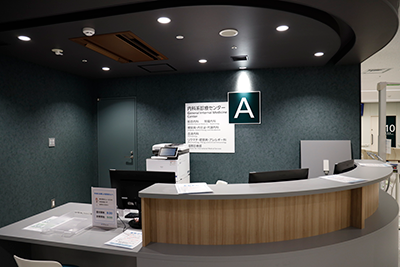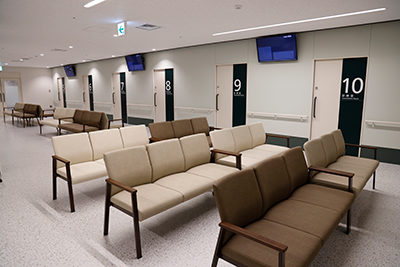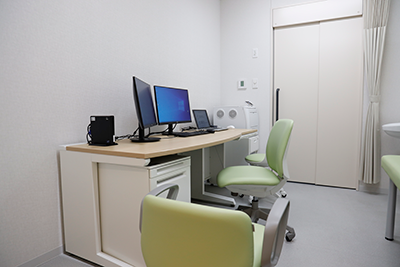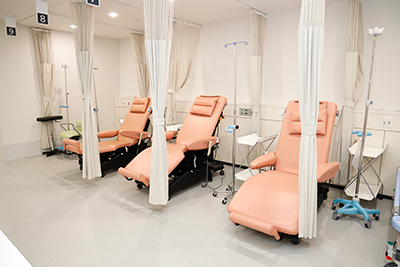General Internal Medicine
Introduction
As the name "general internal medicine" suggests, it refers to a comprehensive, holistic and patient-centered approach.
The phrase "Can't see the forest for trees" refers to someone who is so focused on small details that they fail to see the bigger picture. Hence, we avoid focusing only on the disease which in turn results in ignoring the patient's needs. Instead, we aim to provide so-called custom-made treatment based on each person's social background and lifestyle habits.

Characteristics of this department
Our scope of work covers a wide range of diseases, mainly internal diseases, but also lifestyle-related diseases (hypertension, dyslipidemia, diabetes, etc.), systemic management of patients with multiple diseases, and infectious diseases of unknown cause.
For lifestyle-related diseases, we aim to provide treatment that does not rely solely on drug therapy. Instead, we treat the patient by improving his/her lifestyle through the collaboration of nurses, nutritionists, rehabilitation, and other professionals. We also believe that one of our important missions is to serve as a bridge between patients with so-called multi-morbidities (mainly the elderly) and various specialized medical departments.
You can consult us when you are unsure of what category the disease you are dealing with falls under.




Main diseases
| Outpatient treatment | Hypertension, dyslipidemia, diabetes, chronic kidney disease, hyperuricemia, iron deficiency anemia, infectious diseases such as hay fever, upper respiratory tract inflammation, viral diseases, unknown fevers, consultations regarding abnormal values in health tests, etc. |
|---|---|
| Inpatient treatment | Aspiration pneumonia, urinary tract infection (UTI), dehydration, heat stroke, rhabdomyolysis, hypertensive emergency, viral diseases including new coronavirus infection and influenza, unknown fever, dizziness, etc. Whole body management when hospitalized, etc. |
Treatment
We have introduced clinical pathways for inpatient treatment of aspiration pneumonia, urinary tract infections, dehydration, etc. This involves creating a plan for treatment (infusions, antibiotic drips, etc.) and examinations (blood tests, X-rays, etc.) for each illness from admission to discharge, and then proceeding with treatment according to that plan. We believe that this will lead to standardization of treatment and shortened hospital stays, allowing patients to receive better medical care.
Outpatient schedule
Morning 9:00~12:00(Reception8:00-11:30)/
Afternoon to Evening 13:30~16:30(Reception13:00-16:00)
| Mon | Tue | Wed | Thurs | Fri | |
|---|---|---|---|---|---|
| Morning | ● | ● | ● | ● | ● |
| Afternoon to Evening | ● | ● | ● | ● | ● |
Medical track record of the clinical department
| Disease name | case |
|---|---|
| Aspiration pneumonia | 1610 |
| COVID-19 | 759 |
| Pneumonia, etc. | 581 |
| Kidney or urinary tract infection | 475 |
| Hypovolemia | 350 |
| Sepsis | 95 |
| Vestibular dysfunction | 88 |
| Limb tendon injury | 86 |
| Influenza, viral pneumonia | 55 |
| Pyoderma | 52 |
| Condensed filtration and reinfusion (CART) for refractory ascites | 18 |
Academically certified facility
- Core hospital for the Japan Society of Internal Medicine's internal medicine specialty training program
[The Japanese Society of Interal Medicine https://www.naika.or.jp/pref_program/27_os/] - Japan Geriatrics Society-certified facility
[The Japan Geriatrics Society https://www.jpn-geriat-soc.or.jp/senmoni/ninteisisetu/] - Japan Society of Internal Medicine education-related hospital
Regarding clinical research
Click here for more information on clinical research

